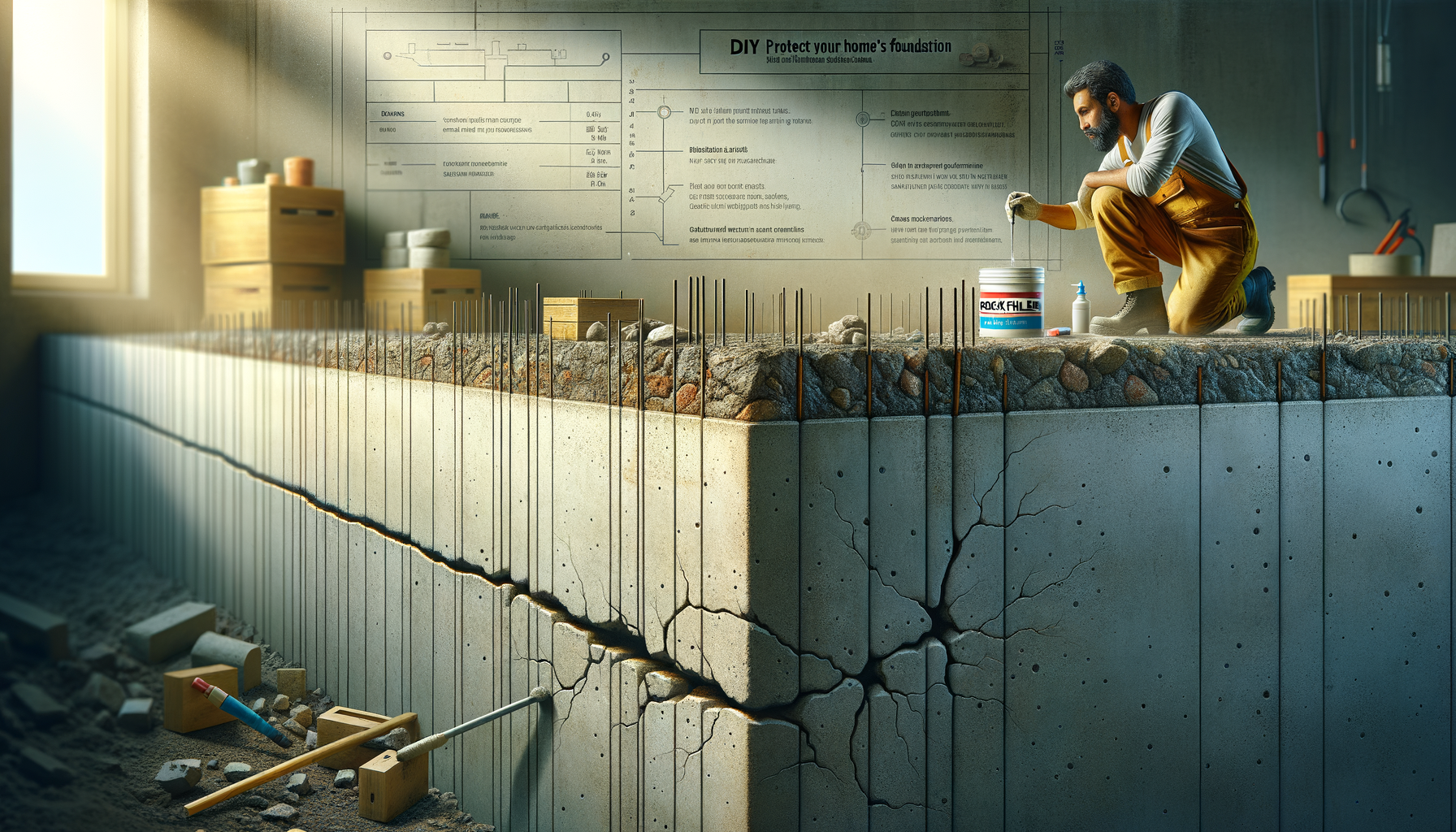Knowing About Foundation Walls
What Are Foundation Walls?
What They Do: Foundation walls hold up your home. They spread the weight of the house to the ground, keeping everything stable and strong.
Types of Foundation Walls:
- Poured Concrete: These are very strong and last a long time.
- Masonry: Made of stone or brick, usually found in older houses.
- Block: Made of concrete blocks, common in many homes.
Why Foundation Walls Matter
Holding Up the House: They support the house and keep it standing.
Keeping Water Out: They stop groundwater from coming into your basement.
Keeping It Warm: They help keep your basement warm by providing insulation.
Common Problems with Foundation Walls
Cracks in the Wall
Types of Cracks:
- Vertical Cracks: Caused by the foundation settling.
- Horizontal Cracks: Could mean serious structural problems due to outside pressure.
- Diagonal Cracks: Often from uneven settling of the foundation.
Why Cracks Happen:
- Soil Settling: When soil moves, it can shift the foundation and cause cracks.
- Water Damage: Too much moisture can weaken the walls and cause cracks.
- Bad Building: Using low-quality materials or bad techniques can create cracks.
Bowing Walls
What It Looks Like: The wall curves or bulges inward.
Why It Happens: Too much water pressure in the soil can push the wall inward.
Water Leaks
Where It Comes From:
- Groundwater: High levels of water can seep into your foundation.
- Rainwater: Bad drainage can let rainwater leak into your basement.
Signs of Leaks:
- Damp Spots: Wet areas on your walls.
- Mold: Mold growing due to constant moisture.
Checking for Foundation Problems
What to Look For
Cracks: Note any cracks you see and keep an eye on them.
Bowing or Bulging: Walls curving in or out.
Water Stains or White Powder: Signs of moisture.
Musty Smells or Mold: Shows ongoing moisture issues.
When to Get Help
Big Cracks or Bowing: Call a professional for serious problems.
Bad Water Damage: If there’s a lot of water damage, get an expert to look at it.
Inspect Yourself vs. Professional Help: You can spot minor issues, but big problems need a pro.
Small Repairs You Can Do Yourself
Fixing Small Cracks
What You Need:
- Crack filler or epoxy
- Caulking gun
- Putty knife
Steps:
- Clean the crack.
- Fill it with the crack filler using a caulking gun.
- Smooth it out with a putty knife and let it dry.
Waterproofing Fixes
Waterproof Coating: Use good waterproof paint and apply it in layers.
Interior Drainage: Install French drains or sump pumps to manage water.
Getting Professional Help
Sealing Cracks
Hydraulic Cement and Epoxy: These materials can seal and stabilize the foundation.
Supporting Bowing Walls
Carbon Fiber Straps: They help support and stop further bowing.
Wall Anchors and Braces: They stabilize and may straighten bowing walls.
Major Repairs
Digging Around the Foundation: This process helps apply waterproofing and fix big structural problems.
Preventing Future Problems
Good Drainage
Grade the Soil: Ensure the ground slopes away from your house.
Install Gutters: They help divert rainwater away.
Managing Water
Sump Pumps: Prevent basement flooding.
French Drains: Direct water away from your foundation.
Regular Inspections
Check Seasonally: Look for damage regularly.
Watch Changes: Monitor existing cracks or bowing for changes.
More Help
Finding Professionals
Local Contractors: Look up trusted local professionals.
Get Help: Reach out to experts for thorough checks.
Learning More
Articles and Guides: Read more about foundation problems.
Repair Videos: Watch step-by-step repair tutorials.
Final Thoughts
Key Points: Keeping foundation walls in good shape is crucial for your home’s strength.
Prevent Issues: Regular checks can stop big problems.
Call for Help: For serious issues, consult a professional.
By following this simple guide, you can better understand, check, and take care of your foundation walls.


Leave a Reply